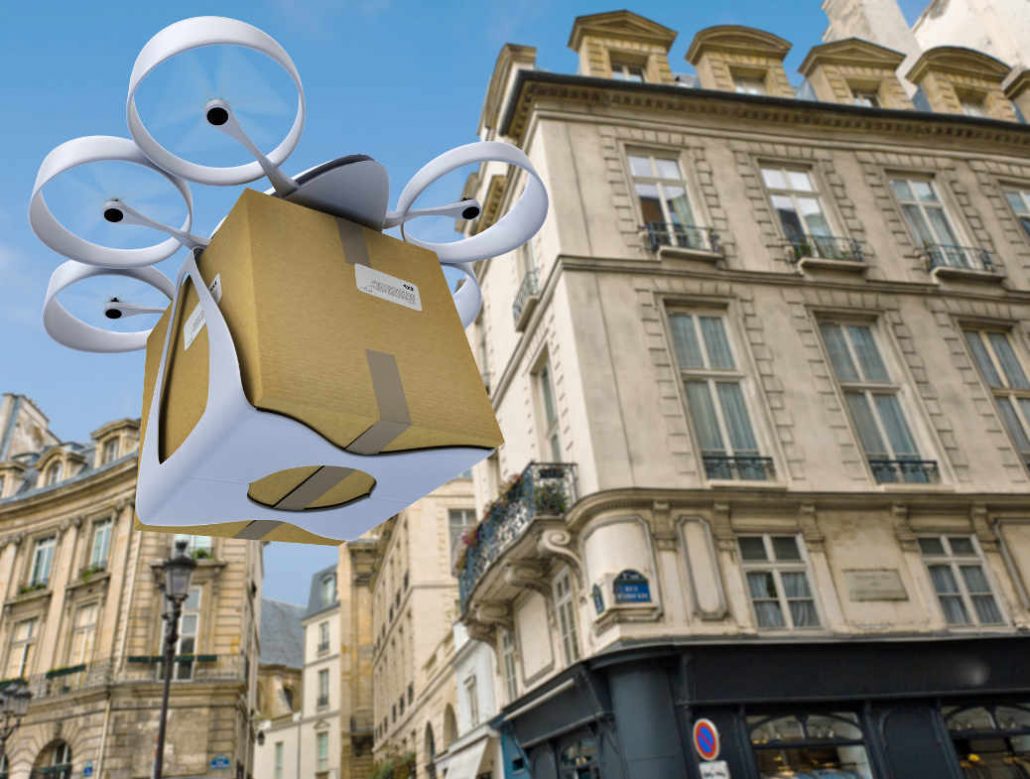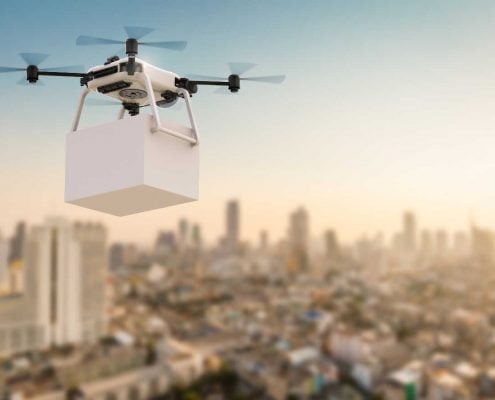While the developments in the use of drones are going very fast, most of its use is still in an experimenting phase. Besides, the technique is working on an individual basis. From start-ups to big companies like Google, Amazon and UPS. Companies are experimenting by delivering pizzas on the beach. In the future, when drones have become widely adapted, a new form of air control must be developed. In crowded areas in particular. When drones might take up from anyplace and land anywhere anytime, air control is far more difficult than control of normal airplanes. And of course, delivery drones are supposed to work without human interference, even beyond sight from the owner of these drones.
Communication
Drones need to communicate with each other, and with other participants of air traffic. Furthermore, questions about prevention from flying over fires and forbidden areas must be solved. For instance airports, strategic points as driveways and military zones. Taking in consideration they might fly of its course due to wind.
Congestion
When pizza delivery will be just as common as delivery by scooter nowadays, a form of air congestion is going to take place as well. Companies are already proposing to use different ‘airlines’ for speedy delivery and slower registering traffic. But then, there must come a solution how to handle the event when delivery drones are in each other environment without colliding. Or to prevent that the whole traffic gets stuck because every device is waiting on other drones.
The ‘congestion’ takes also place in the use of frequencies. Drones use the same frequencies as a lot of other uses. For instance, airlines and military.
Standardization and legislation
That means standardization and legislation is needed. Standardization, to make certain that drones from different users/companies can communicate with each other. And to make decisions to fly safely and as efficiently as possible. Like other kinds of traffic, legislation is needed to set some rules how all devices can participate in drone traffic and traffic in general. And, when industry won’t be able to solve the already issues mentioned on trust and acceptability, legislation might also come in to set restrictions in the use of drones.
Final Thoughts
The application possibilities of drones are very promising for delivery and registration uses. It is still in its experimental phase. But with developments going fast, soon it will reach the maturity phase. For this, there are two-fold kind of challenges.
One of these are challenges on privacy, safety and security. These challenges have to be solved before their use will get widespread trust and acceptance. Besides, there are technical and communication issues: where multiple drones are being used – especially in cities- challenges how drones can and have to behave in traffic has to be solved.
In both challenges, sensors play a pivotal role in solving the technical questions. Find out more about Drones and DC motor Control



